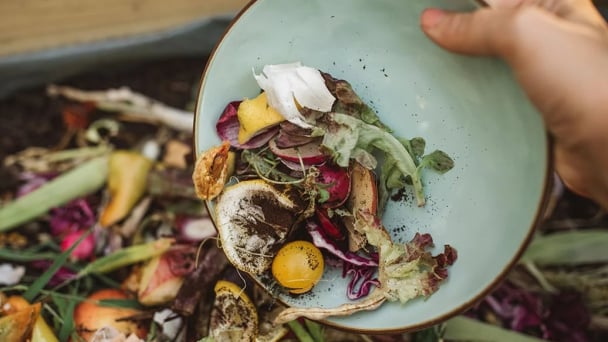May 19, 2025 | 01:56 GMT +7
May 19, 2025 | 01:56 GMT +7
Hotline: 0913.378.918
May 19, 2025 | 01:56 GMT +7
Hotline: 0913.378.918
This was one of several firms' concerns at the forum on "Promoting the exportation of spice products and local specialties to key markets."
Nguyen Nhu Tiep, Director of the Department of Quality, Processing, and Market Development (MARD), stated that the Vietnamese spice crop business was poised to capitalize on a slew of opportunities, with growth potential even greater in regions where spices are widely utilized. Aside from salt, pepper, and other seasonings, fish sauce is a prospective condiment to be promoted further outside due to its unique flavor and Vietnamese value.

Vietnamese pepper has an area of about 120 thousand hectares, grown mainly in the Central Highlands and the Southeast region, with an output of about 190 thousand tons. Photo: TL.
"Previously, we focused excessively on pangasius, shrimp, and rice, all of which are exported to large markets." However, spices and spice crops, as well as other regional specialties, can provide enormous values, so export volume has been limited, with just 5% of spice crop production area and 20% of international trade value roots from Vietnam," Tiep explained.
According to Le Viet Anh, General Secretary of the Vietnam Pepper and Spices Association, spice plantations may be found in practically every province and city in Vietnam. The pepper acreage is around 120 thousand ha, largely planted in the Central Highlands and Southeast region, with an output of approximately 190 thousand tons. Vietnam exported nearly 200 thousand tons of peppers of all varieties in the first nine months of the year, including 183,475 tons of black pepper and 20,910 tons of white pepper. Amise cultivation area in Vietnam is 40,000 ha, predominantly in Lang Son, with an annual yield of over 16,000 tons.
Vietnamese spice crops produce and export roughly 450 tons, with total exports reaching 325 thousand tons, a 6.2% fall in value but a 26.6% gain in quantity. According to Mr. Viet Anh, the drop in export value is attributable to the global economic crisis, which has caused countries to curtail purchases while supply remains plentiful.
In terms of the worldwide competitive landscape for Vietnamese spices, black pepper accounts for 35% of market share, with exports accounting for 55%, competing with countries such as Brazil, India, Indonesia, and Cambodia. Cinnamon, on the other hand, accounts for only 18.2% of total production but accounts for more than 50% of global exports, competing with products from China and Sri Lanka.
In 2021, the global spice and seasoning market was valued at USD 21.3 billion, and it is expected to grow to USD 27.4 billion by 2026. As a result, not only is Vietnam a viable supplier to this market for pepper, but also for other items such as cinnamon, cashews, and so on.

Forum to promote export of local spice and specialty products to key markets organized by the Department of Quality, Processing and Market Development (Ministry of Agriculture and Rural Development).
Despite ideal conditions for spice growing, such as improved product quality, land conditions, climate, and high market demand, the business faces obstacles. One of these obstacles is the lack of a national development strategy for spice crops (cinnamon, cloves, and chili), as well as an abundance of plant protection agents.
Concerning black pepper, the Pepper Association is confident in its ability to support the industry's further growth. However, only around 10% of output is structured through cooperation between corporations and farmers, spanning approximately 10-11 thousand hectares, which is a modest area in comparison to world demand. Other spice crops lack comparable organizational ties.
According to the VPSA spokesperson, only large enterprises and foreign direct investment (FDI) firms have the resources and funds to invest in technology and deep processing of pepper and spices. Only about 35 of the approximately 400 trading enterprises in this industry have processing units. Furthermore, many spice products used as additions have not been studied by institutes or universities.
Mr. Tran Van Hieu, Director of DACE Vietnam Company, which specializes in the production and export of spices such as ginger, cinnamon, and cloves to markets such as Japan, South Korea, Germany, the United Kingdom, and the United States, mentioned the need for exporters to meet plant protection and microbiological standards, which are becoming increasingly stringent from international markets. Domestic growing areas, on the other hand, do not meet the phytosanitary inspection criteria required for import markets. Businesses confront challenges due to the high market demand and limited supply.
Mr. Hieu, like the VSAP official, emphasized the restricted quantity of standard microbiological processing plants. As a result, businesses must explore sources and adopt processes to process spice products for export.
The Department of Quality, Processing, and Market Development was consulted for this article.
Translated by Linh Linh

(VAN) Deputy Minister Nguyen Quoc Tri also expressed his hope that Cuba will soon overcome its current challenges, attain food security, and further expand cooperation with Vietnam.

(VAN) The project contributes to enhancing the resilience of communities vulnerable to the impacts of climate change, with a primary focus on local women.

(VAN) Green materials help save energy and resources. However, after more than 10 years, Vietnam has only developed over 200 green buildings with more than 6 million square meters of floor space.

(VAN) Vietnam - Thailand Business Forum 2025: One plus one on three connects, marking a milestone in the comprehensive strategic partnership between the two nations.

(VAN) The United Nations designated 22 May as the International Day for Biodiversity 2025 with the theme 'Harmony with nature and sustainable development.'
![Multi-channel, multi-directional Vietnamese agricultural markets: [8] A national strategy is needed](https://t.ex-cdn.com/nongnghiepmoitruong.vn/608w/files/phucpm/2025/05/15/1435-thi-truong-nong-san-viet-da-kenh-da-huongbai-8-can-mot-chien-luoc-quoc-gia-084750_728.jpg)
(VAN) The Chairman of Hung Nhon Group shared: ‘Opening up and tapping into new markets is the right and strategic direction for Vietnam's agricultural sector.’

(VAN) Food waste has become a serious issue in modern society, especially in rapidly urbanizing and developing cities like Hanoi.